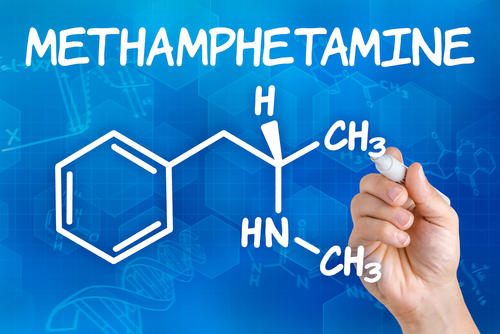A Regulatory Review for Meth Lab Clean Up
 |
The illegal manufacturing of meth is occurring nationwide in cities and towns, homes and businesses, and even in vehicles. It can be accomplished using over-the-counter drugs and household chemicals such as ammonia, solvents, muriatic acid, and even salt. Due to the variety of “recipes” for “cooking” meth, those coming in contact with meth labs, either by accident or in an official response action, may be subjected to chemical exposures with negative health impacts.
At this time, the Occupational Safety and Health Administration (OSHA) does not have a permissible exposure limit for meth, which when manufactured legally, is a Schedule II controlled substance approved by the Food and Drug Administration (FDA) for treating attention deficit disorder with hyperactivity and exogenous obesity. However, workers entering a meth lab should adhere to OSHA HAZWOPER Standard requirements (29 CFR 1910.120) including appropriate training and use of personal protective equipment (PPE) that meets the necessary level of protection.
Meet your OSHA-required 8-, 24-, or 40-hour HAZWOPER training requirements with a DVD that contains 16 customizable PowerPoint® presentations and a manual training kit. Get the details.
The EPA also does not have requirements for meth lab remediation. However, under the Methamphetamine Remediation Research Act (Public Law 110-143) of 2007 the agency was required to establish voluntary guidelines for the remediation of former meth labs based on the best currently available scientific knowledge. EPA’s Voluntary Guidelines for Methamphetamine Laboratory Cleanup was published in 2013.
Not surprisingly, state and local authorities that are on the front lines of response have taken the lead in setting cleanup standards. According to EPA’s Voluntary Guidelines, as of March 2013, 25 states require or recommend that meth lab remediation activities meet certain quantitative standards. These standards ranged from 0.05 micrograms (μg)/100 cm2 of meth to 1.5 μg/100 cm2, with the most common standard being 0.1 μg/100 cm2. Eight additional states have process-based cleanup guidance materials without numerical remediation levels.
At the state level, most remediation standards are not health-based, but rather are based on analytical detection limits and feasibility, which the EPA says “are believed to be set at sufficiently conservative levels to still be health-protective.” In the state of California, however, the Department of Toxic Substances Control (DTSC) calculated a health-based remediation standard for meth of 1.5 μg/100 cm2 that was finalized and signed into law in 2009 as “a safe level of methamphetamine on an indoor surface.” Three other states, Kansas, Minnesota, and Wyoming, also use the 1.5 μg/100 cm2 remediation standard.
Your Search for HAZWOPER Training Is Over—We Guarantee It!
You won’t find a more thorough and effective course related to hazardous waste operations to help meet the employee training requirements of OSHA’s HAZWOPER regulation (29 CFR 1910.120) than BLR’s HAZWOPER Training Program. Your training materials include a DVD, a 200+page HAZWOPER training manual with tests, handouts, and an electronic version on CD! The handy outline tells you exactly what to present and when to meet either the 8-, 24-, or 40-hour requirements. Learn more.
For many states meth is not the only contaminant of concern and several have set quantitative standards for volatile organic compounds (VOCs), corrosives, lead, mercury, and iodine. While cleanup standards for meth and VOCs apply to all meth manufacturing sites regardless of the “cooking” method, the EPA notes that standards for lead and mercury “are especially relevant” in instances where the Phenyl-2-Propanone (P2P) manufacturing method was used.
Among the states with regulations or recommendations in place are:
- 15 states required or recommended VOC levels of less than 1 part per million (ppm).
- 9 states had corrosive standards or recommendations for surface pH at 6 to 8.
- 19 states include lead standards or targets in their remediation guidelines, with standards and targets ranging from 40 μg/ft2 (or its equivalent of 4.3 μg/100 cm2) to a more protective standard of 10 μg/ft2 (or its equivalent of 1 μg/100 cm2).
- 19 states include mercury standards or targets in their remediation guidelines with standards and targets ranging from a more conservative 0.05μg/m3 (equivalent to 50 nanograms (ng)/m3)) to 3.0 μg/m3 (equivalent to 3,000 ng/m3) of mercury in air.
- 1 state has a surface standard for mercury of 0.0054 μg/100 cm2.
- 3 states set an iodine standard or target of 22 μg/100 cm2 for iodine-stained surfaces that are cleaned rather than removed.
